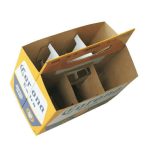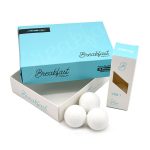In the bustling world of retail, where countless products compete for consumer attention, the retail display box stands as an unsung hero. These carefully designed containers do far more than simply hold products—they communicate brand stories, create visual impact, and ultimately influence purchasing decisions. From luxury cosmetics to everyday electronics, the strategic use of display boxes has become an essential component of successful retail marketing strategies worldwide.
The psychology behind effective retail display boxes is fascinating. Research shows that consumers form initial impressions about product quality within the first seven seconds of viewing. A well-designed display box captures attention, communicates value, and creates an emotional connection before a customer even touches the product. The choice of materials, colors, typography, and structural design all work together to tell a compelling story about what’s inside. Premium brands often use heavier cardstock, metallic finishes, and intricate die-cut windows to convey luxury, while eco-conscious brands might opt for recycled materials and minimalist designs to align with their values.
Modern retail display boxes have evolved far beyond simple containers. Today’s designs incorporate innovative features like interactive elements, QR codes that link to digital content, and reusable components that extend the product’s lifecycle. Some brands have developed display boxes that transform into home storage solutions or include augmented reality experiences. These multi-functional approaches not only enhance the unboxing experience but also create lasting brand impressions that extend far beyond the initial purchase.
The strategic placement and arrangement of retail display boxes can dramatically impact sales performance. Retailers often use techniques like pyramid stacking for visual impact, color blocking to create cohesive sections, and strategic positioning at eye level or near checkout counters. Seasonal displays take advantage of holiday themes, while permanent displays build brand recognition over time. The most successful implementations consider traffic flow, sight lines, and complementary product grouping to maximize exposure and encourage impulse purchases.
Sustainability has become a crucial consideration in display box design. Consumers increasingly favor brands that demonstrate environmental responsibility, leading to innovations in biodegradable materials, water-based inks, and designs that minimize waste. Many companies now use FSC-certified paperboard, soy-based inks, and designs that require less material without compromising structural integrity. These eco-friendly approaches not only reduce environmental impact but also serve as powerful marketing points that resonate with conscious consumers.
The digital integration of physical display boxes represents the next frontier in retail innovation. Smart packaging with NFC chips, scannable codes for loyalty programs, and packaging that interacts with mobile apps creates seamless connections between physical and digital shopping experiences. This convergence allows brands to track engagement, gather valuable consumer data, and provide additional value through digital content, tutorials, or exclusive offers accessible only through the display packaging.
Customization has emerged as a key trend in retail display solutions. Brands now work with packaging specialists to create unique shapes, sizes, and functionalities that perfectly match their products and retail environments. From countertop displays for small luxury items to floor-standing units for larger products, the ability to tailor every aspect of the display ensures optimal presentation and space utilization. This level of customization helps brands stand out in crowded marketplaces while providing practical solutions for retailers.
The return on investment from well-executed retail display boxes can be substantial. Beyond the immediate sales impact, effective displays contribute to brand building, customer loyalty, and increased perceived value. They serve as silent salespeople working around the clock, requiring no training or breaks while consistently presenting products in their best light. The initial investment in quality display packaging often pays for itself many times over through increased visibility, reduced handling damage, and enhanced brand perception.
As retail continues to evolve in the digital age, the physical presentation of products remains critically important. Retail display boxes bridge the gap between online and offline shopping experiences, providing tangible brand interactions that digital channels cannot replicate. They represent a powerful marketing tool that, when executed thoughtfully, can transform ordinary products into compelling purchases and casual shoppers into loyal brand advocates. In an increasingly competitive marketplace, the strategic advantage offered by innovative retail display solutions has never been more valuable.




Leave a Message